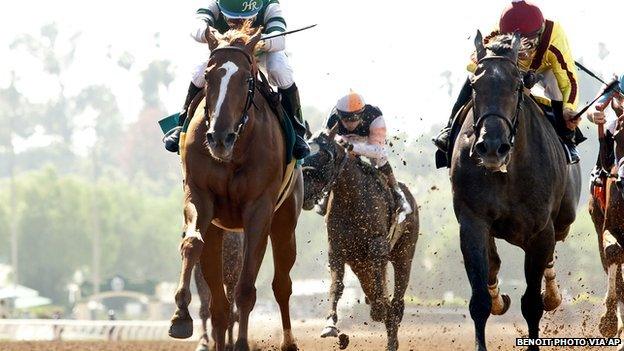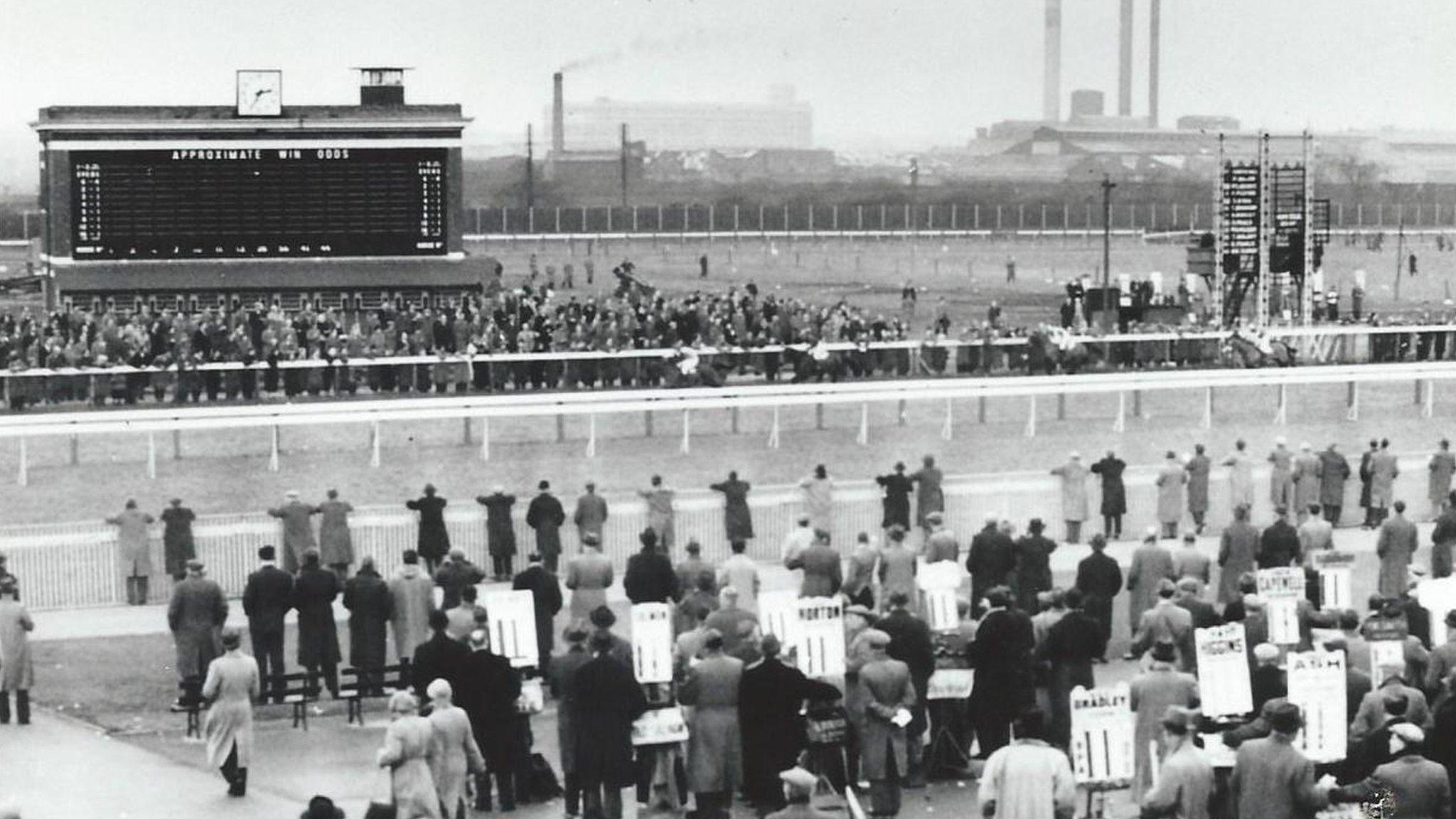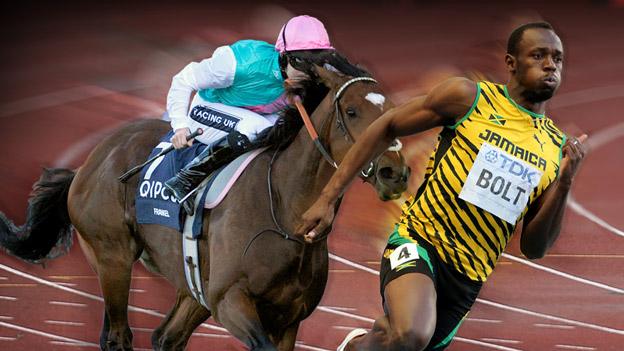Racehorses continuing to get quicker, study indicates
- Published

Faster and faster. Horses speeds have steadily been increasing
Racehorses are continuing to get quicker, a study of winning times spanning 165 years of racing indicates.
This may come as a surprise to many in the racing industry who believe that racehorse speed has reached its limit.
But researchers say more work is required to determine whether the increased speeds are due to breeding techniques or changes in training and riding techniques.
The study has been published in Royal Society journal Biology Letters., external.
Previous studies had shown that racehorse speeds had not increased since 1950.
Many in the race horse industry had concluded that thoroughbreds might have reached the limits of their speed.
This raised the question as to whether it was worth horse owners paying large amounts of money to stud farms aiming to breed future winners.
Sprint races
So Patrick Sharman, a PhD student at Exeter University and race enthusiast, decided to take a closer look. He found that previous studies were not comprehensive.
They only analysed the winning time of a small number of races. These studies included middle distance (8 to 12 furlongs) and long distance (14 to 20 furlongs) races, but excluded sprints (5 to 7 furlongs).
Mr Sharman analysed the times from every single so-called elite race involving the very fastest horses between 1850 and 2012, and also included all race meetings since 1997.
He found that there had been little improvement in speeds between 1910 and 1975. But since then there has been a steady improvement in sprint races.
The average winning time for a six-furlong race over the past 15 years has been cut by more than a second - which is a huge amount by sprint standards. A modern day horse would beat a horse from the early 90s by seven horse lengths.
However, there was little, if any, improvement at middle and longer distances.
Speed over endurance?
Mr Sharman says that this could be due to the fact that horses are being bred for speed rather than endurance. If that is the case, then speeds at middle and long distances could also be improved if breeders changed their methods.
The improvement could be explained by a change in riding techniques since the 1970s - with jockeys adopting Lester Piggott's style of riding with shortened stirrups or improved training methods.
But Mr Sharman wonders why there has been no improvement in the longer distances.
"My hunch is that we are seeing a genetic change, with breeders focusing on speed rather than endurance," he told BBC News.
"I don't believe that over the longer distances horses have reached their limit."
Brian O'Rourke, the managing director of the UK National Stud in Newmarket believes that commercial pressures tend to favour the breeding of speed.
"Back in the 1970s most horses that would win the Derby would go for the Gold Cup which is two and a half miles as opposed to a mile and a half," he told BBC News.
"But since the late 70s and early 80s the thoroughbred industry has become commercialised. Everybody is breeding for speed now because they want precocious horses that run at two (years old) not four.
"They want instant success like flicking a switch, but that does not always happen."
Last year BBC Sport asked leading experts why human athletes were getting faster but horses were not.
- Published24 June 2015

- Attribution
- Published2 April 2014
